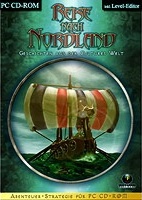

The Dakota and Ojibwe both adapted sleds and toboggans for pulling by domesticated dogs. The first forms of animal-powered transportation in Minnesota date back, again, to the earliest eras of human habitation. But in recent years, bicycling’s exploding popularity-driven in large part by environmental concerns-has sparked the creation of new networks of urban and suburban bicycle paths and a statewide system of bike trails, built largely on abandoned railbeds. As new modes of transportation came to dominate urban transportation during the twentieth century, bicyclists found it increasingly difficult and dangerous to maneuver through city streets. Paul were both building dedicated pathways to accommodate the growing volume of bicycle traffic. By the late 1890s, the cities of Minneapolis and St. But the introduction of the “safety” bicycle, with its lightweight frame and pneumatic tires, sparked a “wheeling” craze. The “two-wheeled machines” grew slowly in popularity. The first bicycles, called velocipedes, appeared in the Twin Cities in 1869. Today, outdoor enthusiasts paddle those same routes, and many others, in modern canoes made of aluminum, plastic, fiberglass, and Kevlar.Īnother, more recent, form of human-powered transportation common in Minnesota is the bicycle.

Once inside the Minnesota interior, they paddled and portaged smaller versions, called North canoes, through a vast network of water routes. Voyageurs working for the Hudson Bay Company, the North West Company, the XY Company, and the American Fur Company transported goods and pelts back and forth across Lake Superior in Montreal canoes, up to thirty-six-feet long. During the fur trade period of the 1700s and 1800s, French, British, and American travelers incorporated technology perfected by Minnesota’s first inhabitants in their watercraft. Forest-dwelling Dakota and the Ojibwe who displaced them relied on lighter, more nimble, birchbark canoes. Plains-dwelling Dakota paddled over long distances in heavy dugouts carved from tree trunks.

Minnesota’s wealth of lakes, rivers, and wetlands have long provided ideal conditions for human-powered water travel. In recent times, shoe-clad Minnesotans have come to think of walking and hiking more as recreation and less as transportation, although many city- and town-dwelling pedestrians still move between destinations on streets, sidewalks, and skyways. Europeans later adopted many foot-travelling techniques and followed many routes established by Minnesota’s Indigenous inhabitants.

They carried food and other necessities on their backs, and when their cargo was too heavy, they pulled it over land and ice on travois, sleds, and toboggans. They wore moccasins and leggings to protect their feet and limbs during warm months, and snowshoes during the winter. The Dakota, and later the Ojibwe, traversed prairies and woodlands by blazing trails and following the paths that animals took to water. HUMAN POWERįor as long as humans have inhabited the land now known as Minnesota, people have moved from one place to another on foot. In Minnesota, like nearly everywhere else, the sources of that power fall into three broad categories: human, animal, and machine. When people move from place to place, something must provide the power that propels them forward. One way to understand the history of human movement in Minnesota is to consider methods of locomotion. Their movements-and the ways they have moved-constitute the history of transportation in the state. People have moved into, out of, and within the borders of the land we now call Minnesota for centuries. Minnesotans are no different in this regard from anyone else. Although some claim to prefer sedentary activities, most actually find it difficult to stay in one place for too long. Humans have always been mobile creatures.


 0 kommentar(er)
0 kommentar(er)
